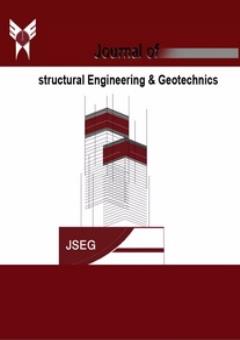-
-
List of Articles
-
Open Access Article
1 - A methodology for Determining the Seismic Vulnerability of Old Concrete Highway Bridges by Using Fragility Curves
Araliya Mosleh jose jara Humberto Varum -
Open Access Article
2 - Development of Seismic Criteria for Seismic Responses of Regular and Irregular Structures in Plan considering Vertical Component of the Near-field Records
Maryam Firoozi Nezamabadi Fariborz Yaghoobi Vayeghan -
Open Access Article
3 - Numerical Analysis of Cyclic Behavior of Beam-To-Column Bolted Connections in Steel Frames
Morteza Rastian Asghar Vatani Oskouieb Hassan Aghabaratic -
Open Access Article
4 - Evaluating Response Modification Factors of Concentrically Braced and Special Moment Steel Frames in Duplex Buildings
Leila Kalani Sarokolayi Sirous Gholampour dehkordib Masoud Shafaghati sefidabc -
Open Access Article
5 - The Investigation of Effective Factors in the Removal of Bentonite Jelly from the Joints of Cut-off Wall Panels
Seyed Majdeddin Mir Mohammad Hosseini Abdolhossein Azadmaneshb -
Open Access Article
6 - Effect of the Cylindrical Reinforcing Element’s Filling Materials on the Soil’s Resistance
Seyed Vahid Mojtahed Sistania Soheil Ghareh Mehdi Siavoshnia
-
The rights to this website are owned by the Raimag Press Management System.
Copyright © 2021-2025







